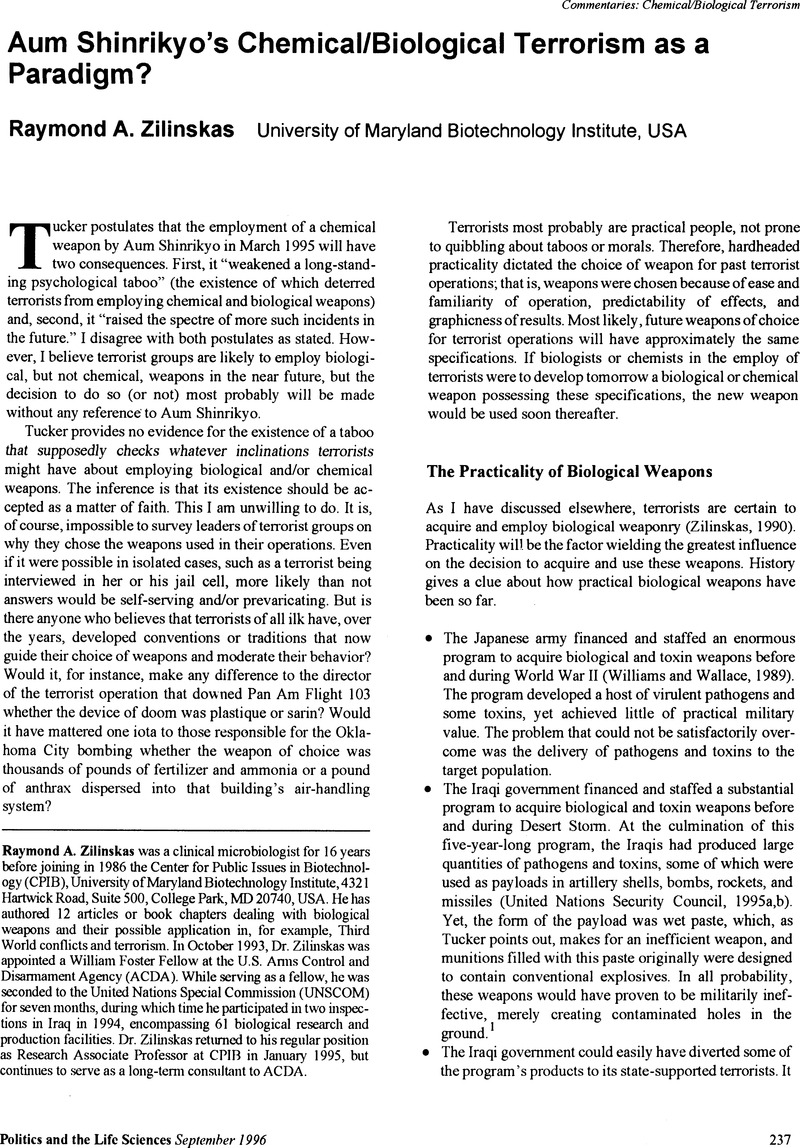No CrossRef data available.
Article contents
Aum Shinrikyo's Chemical/Biological Terrorism as a Paradigm?
Published online by Cambridge University Press: 17 May 2016
Abstract
An abstract is not available for this content so a preview has been provided. Please use the Get access link above for information on how to access this content.

- Type
- Roundtable Commentaries
- Information
- Copyright
- Copyright © Association for Politics and the Life Sciences
References
Beckett, B. (1978). “Chemical Warfare Is Available to Terrorists.” New Scientist 80:100–102.Google Scholar
Mylroie, L. (1995). “The World Trade Center Bomb: Who Is Ramzi Yousef?; Why It Matters.” The National Interest 42:3–15.Google Scholar
United Nations Security Council (1995a). Report of the Secretary-General on the Status of the Implementation of the Special Commission's Plan for the Ongoing Monitoring and Verification of Iraq's Compliance with the Relevant Parts of Section C of Security Council Resolution 687 (1991). UN Document S/1995/864.Google Scholar
United Nations Security Council (1995b). Tenth Report of the Executive Chairman of the Special Commission Established by the Secretary-General Pursuant to Paragraph 9 (b) (i) of Security Council Resolution 687 (1991), and Paragraph 3 of Resolution 699 (1991) on the Activities of the Special Commission. UN Document S/1995/1038.Google Scholar
Williams, P. and Wallace, D. (1989). Unit 731: The Japanese Army's Secret of Secrets. London: Hodder and Stoughton.Google Scholar
Zilinskas, R.A. (1990). “Terrorism and Biological Weapons: Inevitable Alliance?” Perspectives in Biology and Medicine 34(1):44–72.CrossRefGoogle Scholar


